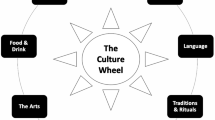Abstract
Pediatric radiology departments rely heavily on a dedicated, efficient and collaborative multi-disciplinary health care team to provide efficient service and quality care to patients and families. Certified child life specialists are an essential part of this multi-disciplinary team. The main goal of the child life specialists is to improve the overall experience for patients and families. In addition, child life specialists, working in collaboration with the medical care team, help decrease the need for general anesthesia by providing patient pain management, distraction and coping techniques. These interventions result in improved patient safety, increased departmental efficiency and increased revenue. The role of child life specialists extends into the exam room, where their interventions help decrease procedure times and improve imaging quality. In this article, the authors discuss the key role of child life specialists in a pediatric radiology department and provide examples of how child life can impact patient safety, patient and family satisfaction, and operational efficiency.

Similar content being viewed by others
References
The Association of Child Life Professionals (1996) Directory of child life programs in North America. The Association of Child Life Professionals, Chicago
Percelay JM, Betts JM, Chitkara MB et al (2014) Child life services. Pediatrics 133:e1471–e1478
Thompson RH (ed) (2009) The handbook of child life: a guide for pediatric psychosocial care. Charles C. Thomas, Springfield
Tyson ME, Bohl DD, Blickman JG (2014) A randomized controlled trial: child life services in pediatric imaging. Pediatr Radiol 44:1426–1432
Tyc VL, Fairclough D, Fletcher B et al (1995) Children’s distress during magnetic resonance imaging procedures. Child Heath Care 24:5–19
Murag S, Suzukawa C, Chang TP (2017) The effects of child life specialists on success rates of intravenous cannulation. J Pediatr Nurs 36:236–240
McGee K (2003) The role of a child life specialist in a pediatric radiology department. Pediatr Radiol 33:467–474
Durand DJ, Young M, Nagy P et al (2015) Mandatory child life consultation and its impact on pediatric MRI workflow in an academic medical center. J Am Coll Radiol 12:594–598
Rudder BS, Easley SJ, Robinson AL et al (2019) Effects of an MRI try without program on patient access. Pediatr Radiol 49:1712–1717
Bandstra NF, Skinner L, Leblanc C et al (2008) The role of child life in pediatrics pain management: a survey of child life specialists. J Pain 9:320–329
Perez M, Cuzcaden C, Sommer JF et al (2019) Easing anxiety in preparation for pediatric magnetic resonance imaging: a pilot study using animal-assisted therapy. Pediatr Radiol 49:1000–1009
Geller SM, Greenberg LS (2015) Therapeutic presence: a mindful approach to effective therapy. American Psychological Association, Washington, DC
Jensen JD, Allen L, Blasko R, Nagy P (2016) Using quality improvement methods to improve patient experience. J Am Coll Radiol 13:1550–1554
Turner JC, Fralic J (2009) Making explicit the implicit: child life specialists talk about their assessment process. Child Youth Care Forum 38:39–54
Trzeciak S, Mazzarelli A, Booker C (2019) Compassionomics: the revolutionary scientific evidence that caring makes a difference. Studer Group, Pensacola
Wyles R, Wilson D, Rode J et al (2006) Preparing children and families for surgery: Mount Sinai's multidisciplinary perspective. Pediatr Nurs 32:35–43
Khan JJ, Donnelly LF, Koch BL et al (2007) A program to decrease the need for pediatric sedation for CT and MRI. Appl Radiol 36:30–33
Jaimes C, Gee MS (2016) Strategies to minimize sedation in pediatric body magnetic resonance imaging. Pediatr Radiol 46:916–927
De Bie HM, Boersma M, Wattjes MP et al (2010) Preparing children with a mock scanner training protocol results in high quality structural and functional MRI scans. Eur J Pediatr 169:1079–1085
Author information
Authors and Affiliations
Corresponding author
Ethics declarations
Conflicts of interest
None
Additional information
Publisher’s note
Springer Nature remains neutral with regard to jurisdictional claims in published maps and institutional affiliations.
Rights and permissions
About this article
Cite this article
Kinnebrew, S.L., Dove, C.G., Midwin, C.M. et al. The role of child life in pediatric radiology. Pediatr Radiol 50, 1509–1513 (2020). https://doi.org/10.1007/s00247-020-04795-x
Received:
Revised:
Accepted:
Published:
Issue Date:
DOI: https://doi.org/10.1007/s00247-020-04795-x




